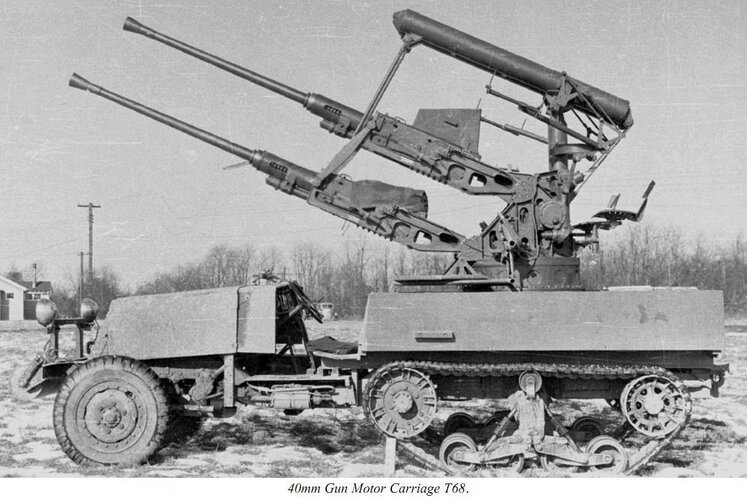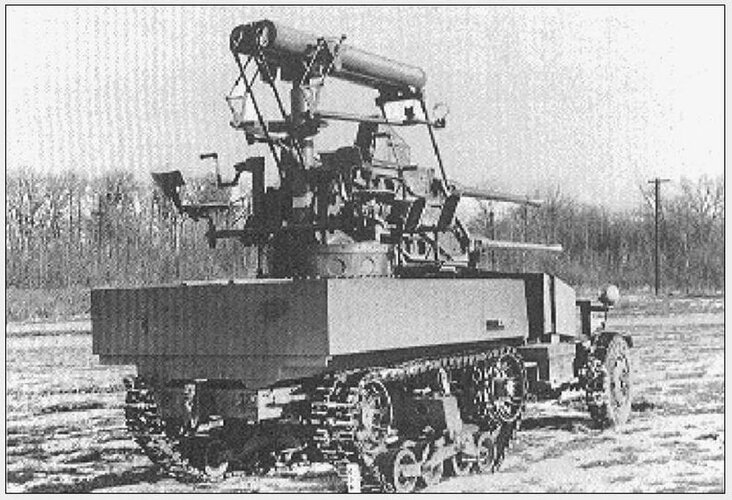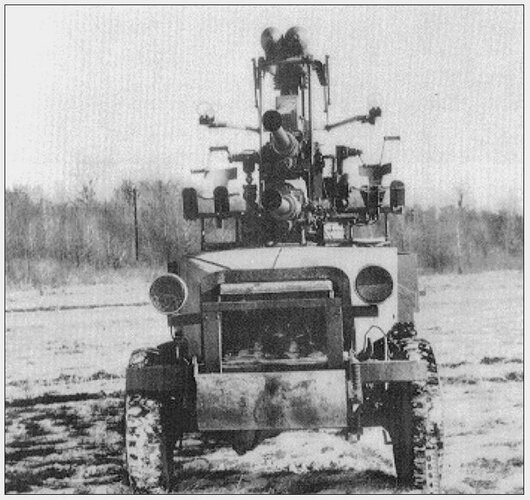klem
I really should change my personal text
- Joined
- 7 March 2015
- Messages
- 727
- Reaction score
- 1,633
Designed in 1942 by the American Ordnance Company, an old-established gun-making concern of Bridgeport, Connecticut, the M3 half-track carrier, known as the 40mm Gun Motor Carriage T68 (GMC T68) and featured unusual gun layout. The guns were placed, one above the other, a configuration with an overhead equilibrator cylinder. In June 1943 the only copy of the GMC T68 was tested by the Antiaircraft Artillery Board, without success which ended this experience.(The Bofors Gun-Terry Gander)



